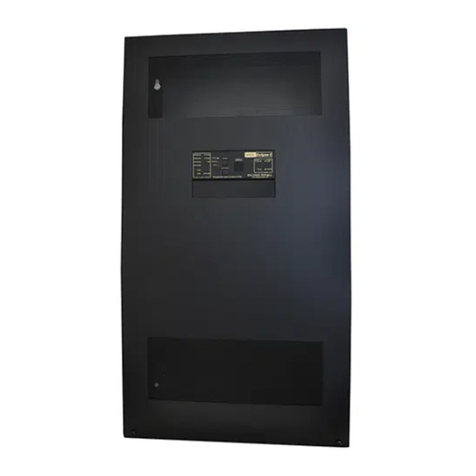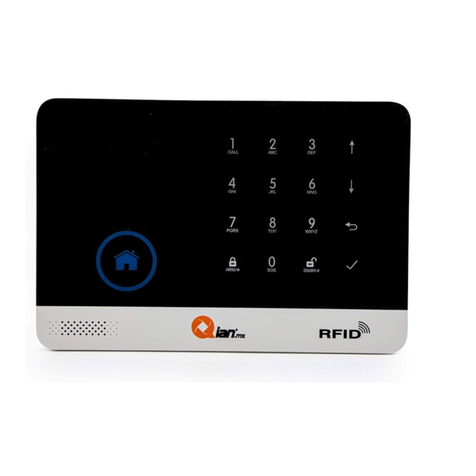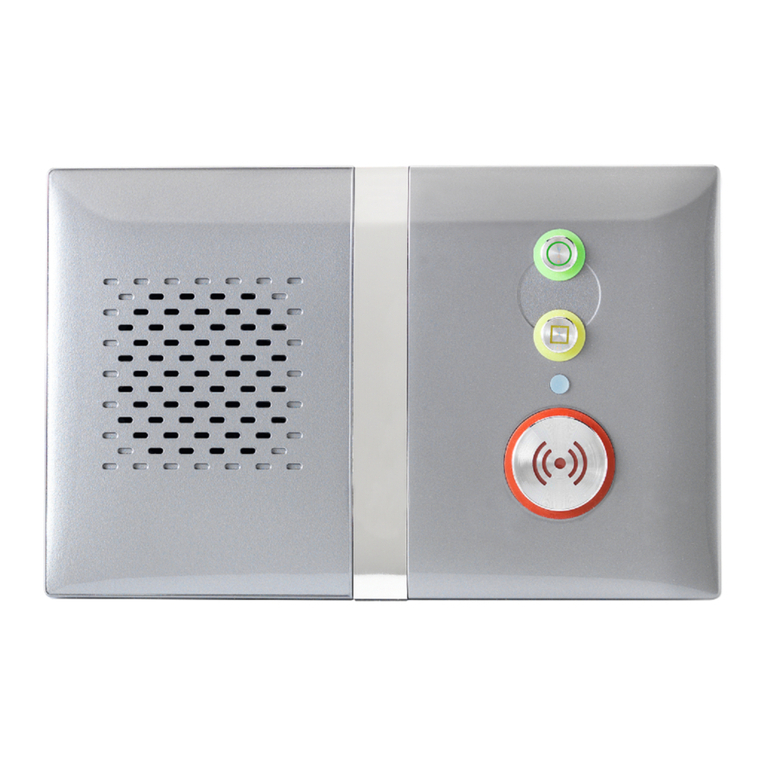NORMARC 7050 User manual

©1999 Navia Aviation AS
NORMARC 7050
MARKER BEACON
Transmitter

©1999 Navia Aviation AS

©1999 Navia Aviation AS 21464-5 TX 1373A Transmitter
TRANSMITTERNORMARC 7050
MARKER BEACON
1-3
TRANSMITTER DESCRIPTION
1 TX 1373A Transmitter
1.1 General Description
TX 1373A is a module designed to transmit Marker Beacon signals. An on board oscillator
working at 75 MHz provides an output of app.0 dBm that is used as input to the Power Ampli-
fier (PA). The level of this input signal is adjusted to an output of app. +20 dBm. The Power
Amplifier is capable of delivering up to 4W carrier power at the cabinet output.
Unwanted frequencies are removed by a lowpass filter after the PA. Part of the signal out of
the PA is tapped off to be demodulated and used for feedback and self test purposes. Demod-
ulation is done by a mixer with a linear detector.
The audio signals are generated in the LF circuitry mainly by a Field Programmable Gate
Array (FPGA). Inner, Middle or Outer Marker is selected by straps.
1.1.1 Block diagram
Figure 1-1 TX1373 Block diagram
1.1.2 Signals
Oscillator
Modulation detector
LP filter
Power Amplifier
Automatic Gain Control
RF OUT
LF Generator
Maintenance/
Monitor
Modulation Amp
Modulation Control
AMUX_A[3:0]
DAC_DATA[7:0]
DAC_CTRL
MODULATION / BIAS
RF LEVEL / IDENT
MAINTENACE SIGNALS
DET_SIGNAL
TXCS
TXWR
TXRD
IOD[7:0]
TX_CTRL_BUS
TRANSMIT
TRANSMIT
RMS_LEV[1:0]
A_TX[P,N]
HBK817-1

TRANSMITTER
1-4
21464-5
NORMARC 7050
MARKER BEACON
TX 1373A Transmitter ©1999 Navia Aviation AS
(See block diagram Figure1-1)
1.1.3 Building blocks
(See block diagram Figure1-1)
OSCILLATOR
The oscillator is controlled by the Transmit signal from the LF generator. When Transmit is
low, a controllable voltage generator turns the internal oscillator 12V voltage on. +12 VDC is
then applied to the collector of a bipolar transistor, which is the active device of the oscillator.
A 75 MHz crystal is connected in the feedback path together with a resonance circuit.
The output signal is amplified to approximately 0 dBm through a RF gain block.
Signals in: ON/OFF to switch oscillator on.
Signals out: RF to AGC
AUTOMATIC GAIN CONTROL
The AGC circuitry is designed to adjust the signal level from the oscillator to the PA. The sig-
nal from the oscillator is fed to one of the ports of a dual gate MOSFET. The signal enters the
In From Description
IOD[7:0] MO 1374 Parellel data bus for communication between TX
1/2, CI and MO1
~TXCS MO 1374 Transmitter card select
~TXWR MO 1374 Write strobe for IO bus
~TXRD MO 1374 Read strobe for IO bus
TX_ADR CI 1376 Transmitter select
TX_ON MO 1374 Transmitter on/off
AMUX_A[3:0] MO 1374 Used to select measurement
~RMS_LEV[1:0] MO 1374 Signals access level for RMS
Out In Description
RF_OUT Antenna Radio signal
∼TX_FB MO 1374 Signal tells monitor that transmitter is active
A_TX[P,N] RMS RMS analogue test signals
∼TXCSB MO 1374 Transmitter card select back
Bidirectional To/From Description
TX_CTRL_BUS MO 1374 Changeover Control (TX_ADR), transmitter on/
off (TX_ON), card select back (TXCSB), feed
back (TX1/2_FB)
Power in From Description
V20P PS 1375 +20 VDC to PA
V12P PS 1375 +12 VDC
VDD PS 1375 +5 VDC
GND PS 1375 Analogue ground
V12N PS 1375 -12 VDC

©1999 Navia Aviation AS 21464-5 TX 1373A Transmitter
TRANSMITTERNORMARC 7050
MARKER BEACON
1-5
PA after being amplified, while part of it is fed back to the other port of the MOSFET. The
transistor detects the difference between these two signals and increases or decreases the
signal out to the PA, depending on the signal levels from the oscillator.
Signals in:7 5 MHz RF from oscillator.
Signals out: RF to PA, app. +20 dBm
DRV_AGC: control voltage to monitor.
POWER AMPLIFIER
The Power Amplifier stage is implemented by three cascaded stages, with the two first
being bipolar MRF 553 transistors that are collector modulated. The modulation voltage is 0-
12VDC both at stage one and stage two. With an input signal from oscillator / AGC of +20
dBm, the first stage will deliver +30 dBm peak power with a dynamic range of 25 dB. A 10 dB
resistive π-attenuator is inserted before stage two. The input to the second stage will then be
+20 dBm. After amplification and modulation, the peak power will be +30 dB, but the dynamic
range is increased to 50 dB. The last stage is a MRF 171 MOSFET transistor designed to
deliver high power output. It is biased by 1mA and +20VDC drain voltage. After amplification,
the peak power will be +43 dBm with a dynamic range of 75-80 dB.
The TX is capable of delivering 4W carrier power.
Signals in: 75 MHz RF from oscillator / AGC.
Modulation voltages, up to +12VDC.
Power Supply, +20 VDC.
Bias, 0-5 V, to power stage.
Signals out: RF to detector / LP Filter.
LOW PASS FILTER
The output signal from the PA is filtered to remove harmonic frequencies. The filter is a seven
pole passive lowpass filter.
Signals in: 75 MHz RF PA.
Signals out: RF to CI 1376.
MODULATION DETECTOR
Part of the output signal is demodulated for feedback and self test purposes. The signal is
tapped out via a hybrid coupler to avoid destructive coupling from the detector to the output
signal and make sure the detected signal is good. The detection is achieved by a mixer and
linear detector. The output is used both as feedback to the modulation control circuitry, and
sent to the monitoring circuit where RF level and keying envelope are detected.
Signals in: RF_In from PA.
Signals out: DET_SIGN to modulation control circuitry.
LO_LEVEL to monitor.
LF-GENERATOR
A Field Programmable Gate Array (FPGA) clocked by a 4.9152 MHz oscillator, EEPROM and
other digital circuits generate the LF signals. The generated LF frequency is a square wave
that is converted to a sinusoidal signal by filtering off the higher order harmonics. The main

TRANSMITTER
1-6
21464-5
NORMARC 7050
MARKER BEACON
TX 1373A Transmitter ©1999 Navia Aviation AS
inputs to the FPGA are the strapped signals used to select outer, middle, inner or FAN marker
frequency, as well as status signals regarding oscillator, RF- and LF-level output. Communi-
cation with the FPGA is done by the IOD[7:0], ~TXRD and ~TXWR signals. Multiplying DAC’s
are used to adjust RF level and modulation depth. The keyed LF signal and the RF level is
applied to the Modulation Control Circuits. The modulation voltages to the PA is generated by
the use of these signals as well as the ON/OFF signal from the AGC and the detected signal
from the PA.
MAINTENANCE / MONITOR CIRCUITRY
The purpose of the onboard monitor circuitry is to give the Monitor card MO 1374 information
about the status of the transmitter. The AMUX_ADR[3:0] from the MO 1374 is applied to the
analogue multiplexer. These four lines select one of sixteen possible signals to be measured.
The signals measured are:
• PA 20 VDC supply voltage
• PA current drain @ 20 VDC
• Detected RF level from demodulator
• Keying envelope from demodulator
• Positive/negative modulation peaks
• LF AGC voltage
• Driver AGC voltage
• RF level DC voltage from LF generator
• Supply voltage status
The signal information is sent to the MO 1374 monitor unit as a differential analogue test sig-
nal from the MUX.












Table of contents
Popular Security System manuals by other brands
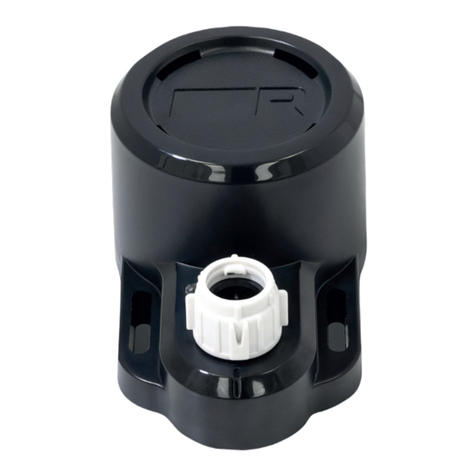
Raymarine
Raymarine SEATALK NG installation instructions
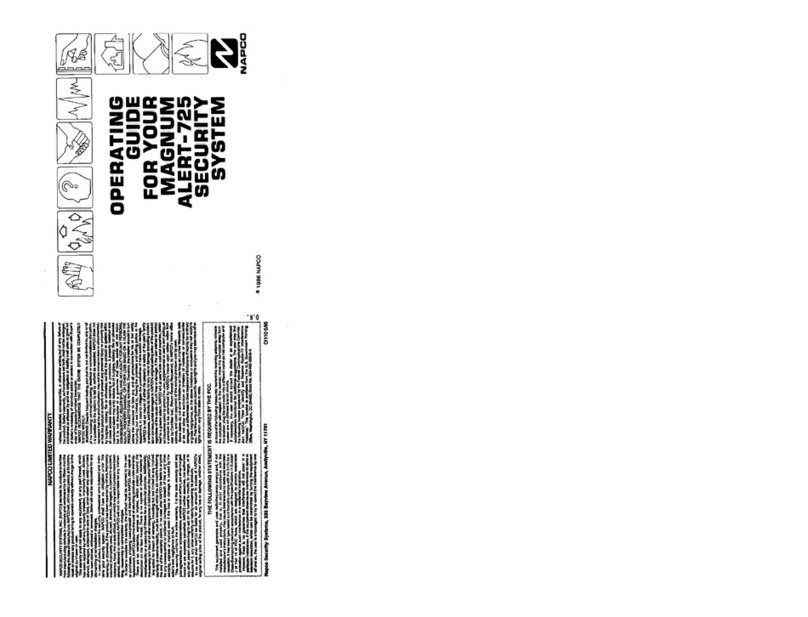
NAPCO
NAPCO MAGNUM ALERT-725 manual

Pollmeier
Pollmeier SE Touch-to-open Getting started
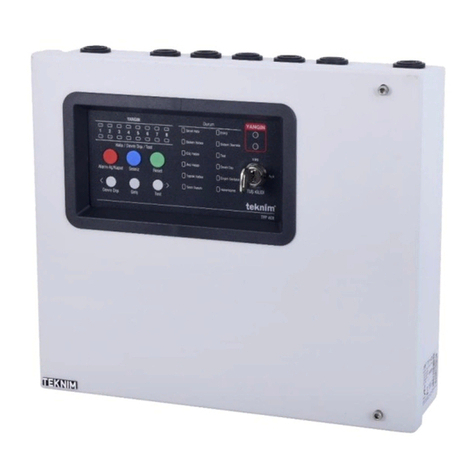
Teknim
Teknim TFP-40 Series Installation & operation manual

Reliance Controls Corporation
Reliance Controls Corporation THP211 installation instructions

DAITEM
DAITEM SH146AX installation manual

Aritech
Aritech AS280G3 Installation sheet

Resi-Cam
Resi-Cam RESI-200 owner's manual
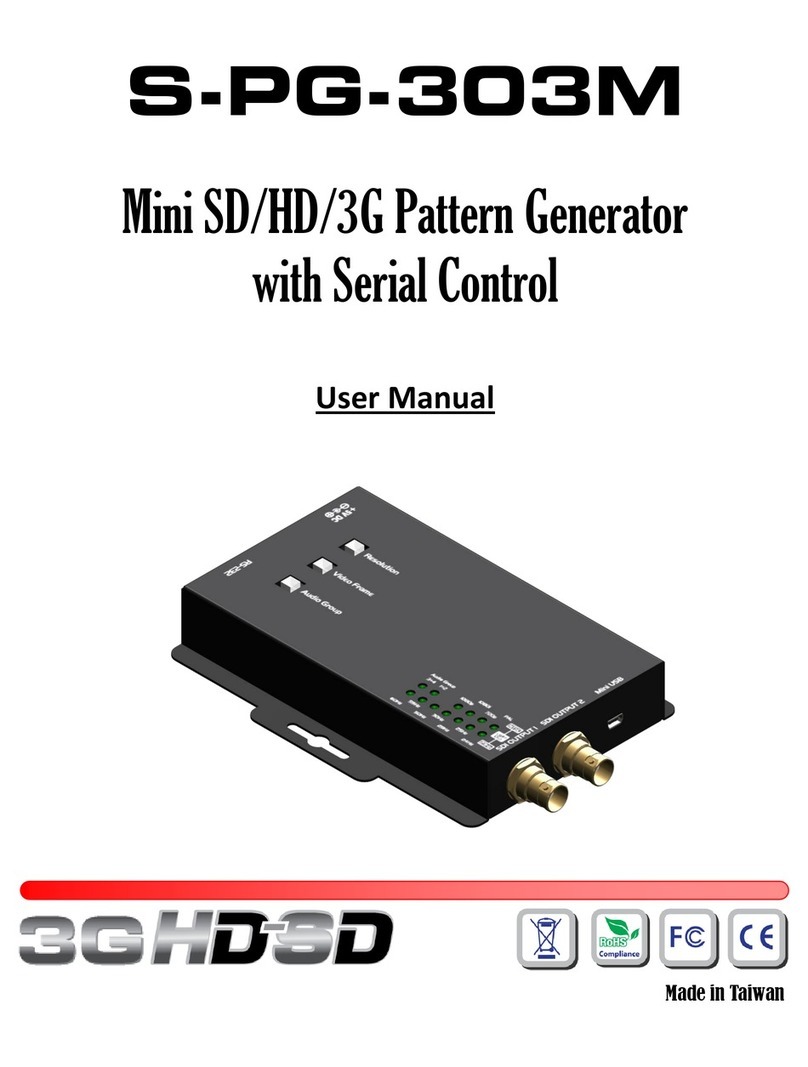
GoMax Electronics
GoMax Electronics S-PG-303M user manual
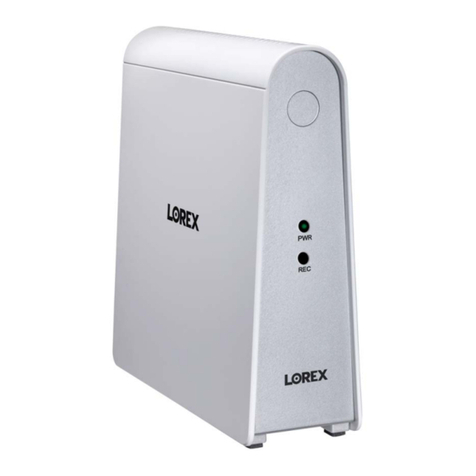
Lorex
Lorex LHWF1000 Series Quick reference guide
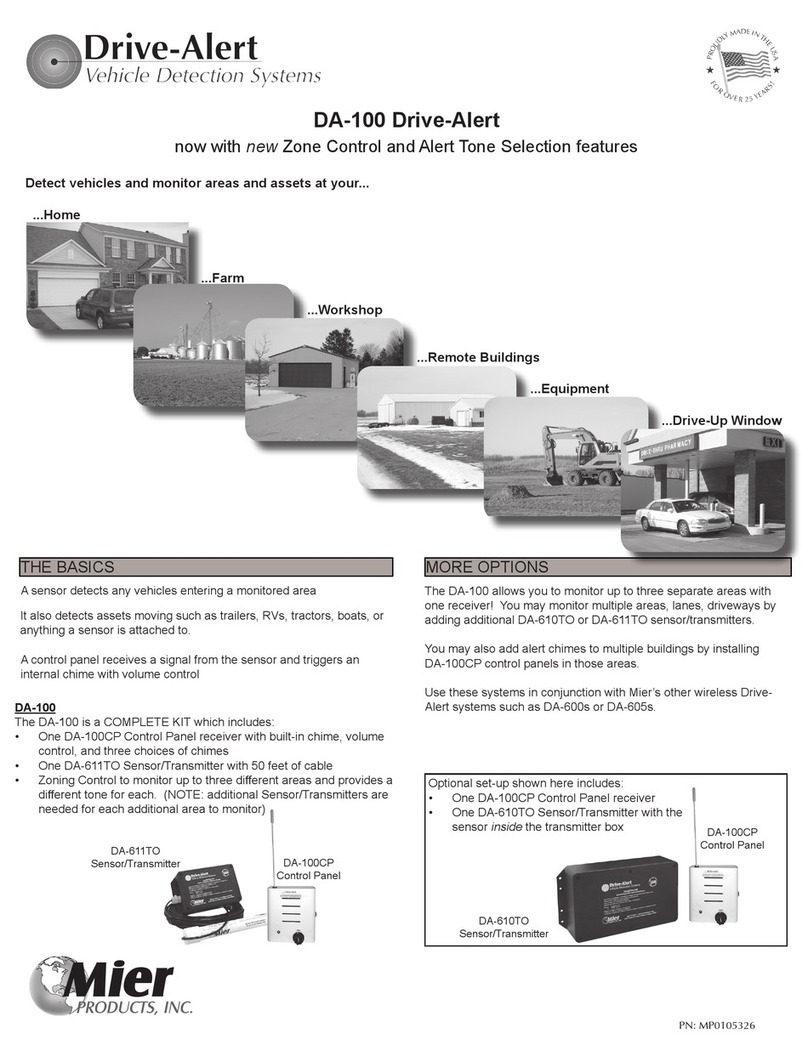
Mier products
Mier products DA-611TO installation manual
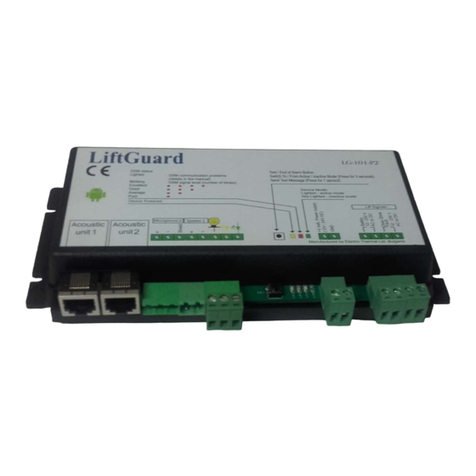
Electrothermal
Electrothermal LiftGuard LG-101-P2 quick start guide


